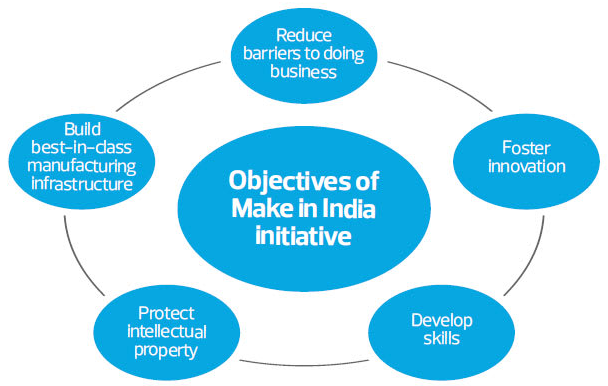Reassessing Export-Led Growth Model
This article is based on “Top-heavy governance might be well past its expiry date already” which was published in The Live Mint on 05/08/2020. It talks about the prospects of export-led growth for India.
As the global supply chains look to diversify their sources, amid Covid-19 pandemic, India hopes to become one of the replacements for China. Moreover, the idea of turning the Indian economy into an export-led economy is not new.
This idea is visible in the objectives of Make in India program and Economic Survey has proposed the creation of a Shenzhen-style Autonomous Employment Zones (China), which would be characterized by a highly entrepreneur-friendly regime with respect to land, labour, enforcing contracting and international trade.
China was the last country to lift itself out of poverty by becoming the factory to the world, but economic experts doubt that global demand in the post-covid era will be enough to accommodate another manufacturing giant to arise.
Due to the different geo-economic scenario today, it is contemplated that the export-led growth may not be viable for India.
Different Geo-Economic Scenario
- The problem of Four Ds: Many global economists are of the opinions that today’s world is unlikely to sustain export-led growth, due to the problem of four Ds viz: depopulation, declining productivity, high debt, and deglobalization.
- Demand in most parts of the developed world will not grow too fast, as they are ageing (Japan, northern Europe), and demand in the developing world will also decline in the near future.
- As the US is turning protectionist and the EU has in place many trade barriers, this will further reduce demand for developing countries’ exports.
- High-Tech Production Over Cheap Imports: The developed countries are increasingly turning to high tech to produce cheap consumer goods, which require fewer workers and are therefore cost-effective.
- Thus, manufactured goods in developed countries are slowly replacing the cheap imports from developing countries
- Market-Reforms, No Longer to be Panacea: The structural reforms like labour reforms would have had a significant impact in 1991, but are unlikely to provide the same growth boost today.
- This is because businesses have found other ways to deal with inflexible labour laws, as technology seems to have replaced all other factors of production as the main driver of growth.
- Competition From Neighbourhood: It is thus very difficult for India to enter the global value chain, as smaller neighbours like Thailand or Sri Lanka are already producing cheaper automotive parts and electronic components for multinational companies.
- Structural Issues: Many goods in India are produced in the medium and small enterprises and have poor quality.
- This is because the labour involved in the production is lacking adequate training in skills, education, and is less disciplined than in India’s competitor countries.
- Apart from this, there are other problems also like access to credit, power and water.
- Security Imperative for India: Geopolitically, China is turning out to be a big threat for India. This means India will have to divert scarce resources to defence and internal security.
Way Forward
- Building Domestic Demand: No matter how bleak the global demand remains in the present times, a robust industrial architecture is crucial for a country to become self-sufficient.
- Thus, there is a need to build strong domestic demand, to sustain industrial activity in India.
- Focus on Knowledge Power: As the population in the majority of the developed world is ageing, India can leverage its demographic dividend and export its human resource to the world.
- For this, India needs to invest in its education, research & innovation capabilities and turn into a Knowledge superpower.
- Addressing Structural Issues: All countries that promoted export-led growth invested heavily in human capital and ensured very good infrastructure with ports, roads, airports and railways. Thus, India needs to:
- Invest in its labour force and provide them with regular, affordable food supply and housing.
- Build a well- functioning infrastructure and take various trade facilitation measures like easier customs clearances, less paperwork.
- Economic Decentralisation: There is also the need for economic planning to be devolved lower and lower down all levels of government so that people are empowered to take up an economic activity that suits them and develop the resilience needed to respond to new opportunities and threats.
- Providing Easy Credit: Providing easy credit remains a critical aspect of mobilising investment. Hence, India also needs cleaning up of the Non-Performing Assets. In this context, the privatisation of banks will be a step in the right direction.
Conclusion
The idea of the export-led economy has been very successful for many East-Asian countries (also called East-Asian Miracle). In the 1960s and 70s, these countries transformed their economies rapidly from developing countries to become middle-income countries through high export.
However, the viability of a new export-based economy, that India aspires to be, depends on policy restructuring, reaping demographic dividend and leveraging its domestic market.
|
Drishti Mains Question In order to become an export-led economy, there is a need to build strong domestic demand, to sustain industrial activity in India. Discuss. |
This editorial is based on “Toxic Brew” which was published in The Hindu on August 4th, 2020. Now watch this on our Youtube channel.

